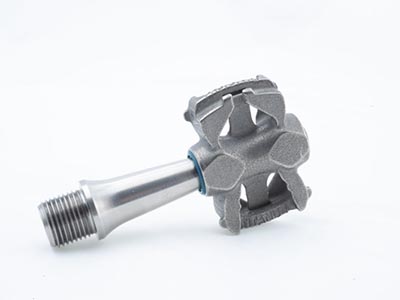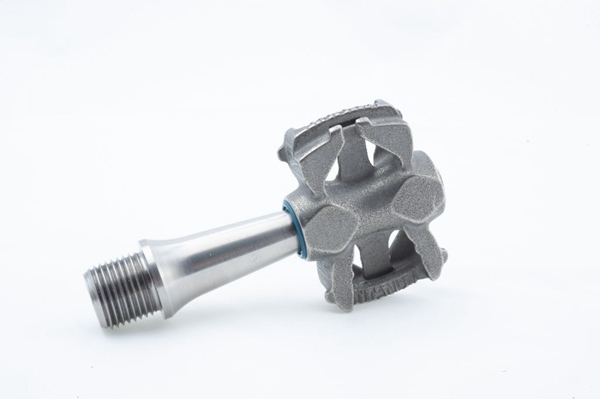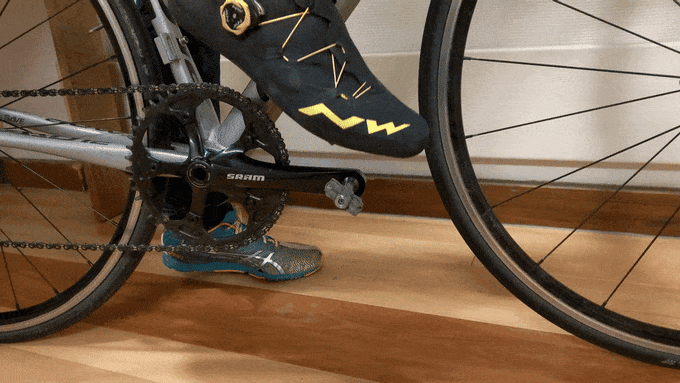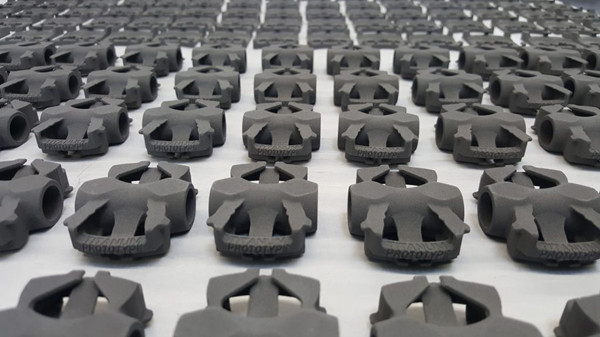Titanum unveils its new 3D-printed titanium bicycle pedals

3D printing technology developer Headmade Materials has partnered with 3D printing services bureau Element22 to develop novel 3D-printed bicycle pedal designs.The clamp-free titanium pedal, called MyTi, is a prototype made using Cold Metal Fusion (CMF), Headmade Materials’ proprietary technology for Metal SLS 3D printing processes.The pedal will be launched this summer under the co-brand Titanum.

Myti clip-free pedal
First, introduce the background knowledge of bicycle pedals.The clipless pedals feature no extra-long straps, which means users often have to lock them through anti-slip pins in the bottom of the bike’s sole.Unfortunately, it’s not uncommon for competitive cyclists to accidentally loosen their skid spikes when they pedal too tight or pull high during a jump.Myti aims to solve this problem, as it only allows the nail to be released by pulling laterally.
The Myti clipless pedal is compatible with road and mountain bikes and has been designed with performance in mind.They are double-sided, stack only 7.3mm high, and weigh an extremely light 69g.The pedal, which is 3D-printed with TI64, is about twice as strong as aluminum and 40 percent lighter than steel.
Rico de Wert, one of Titanum’s co-founders, has been experimenting with pedal design for years, but has historically encountered problems with technical feasibility or high production costs.By enlisting the help of Element22, De Wert was able to overcome these obstacles and, earlier this year, the Titanum brand was born.
The Titanum team has 3D-printed the first prototypes of Myti and has now refined the design and filed a patent application.The pedals have even been field-tested by leading bicycle experts such as Ralf Holleis of Huhncyles and Sturdy Cycles of Tom Sturdy.

What makes CMF 3D printing different?
In addition to providing the geometric freedom required to manufacture abstract Myti structures, the CMF 3D printing process can also be mass-produced, which will enable the Titanum team to mass-produce thousands of pedals.While most metal SLS systems may struggle with thermal stress, rich support structures and low productivity, Headmade Material’s CMF is well designed.The method draws on the ideas of SLS and adhesive injection and involves mixing a metal raw material powder with a functional adhesive.
Because only the adhesive, not the actual metal, is melted, the system can use less energy and improve its scanning speed.In this way, the printing speed is greatly improved, and there is no need for heat sink structure.After the parts are printed, they are bound and sintered to obtain a fully compact titanium pedal.

Late last year, sportswear giant Adidas revealed what it called the ultimate 3D-printed running shoe, the Futurecraft “Strung.”Using the latest Futurecraft insoles from 3D printer maker Carbon, the Strung is made using an industry-first textile printing process based on user-specific anatomical data
Elsewhere, Carbon has partnered with sporting goods manufacturer CCM Hockey to 3D-print the world’s first NHL-certified Hockey helmet lining.Produced using Carbon’s proprietary digital light synthesis (DLS) resin process, the Super Tacks X with NEST (Next Generation Evolution Sensing Technology) has a digitally printed lattice structure on its lining.
In addition to its applications in heavy industries such as automobiles and aerospace, 3D printing is also taking off in sporting goods.
